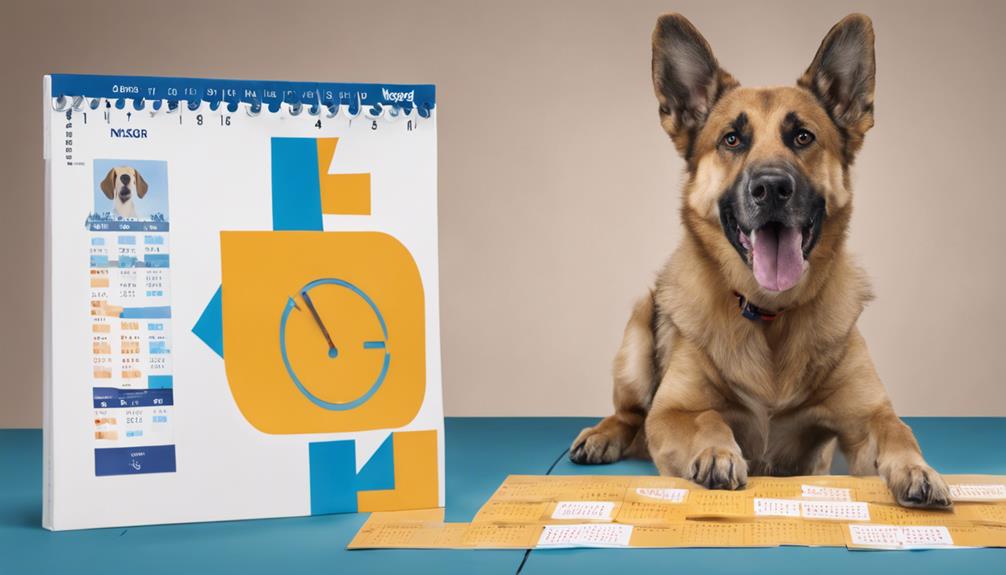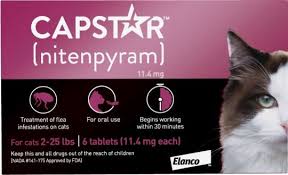How Does NexGard Work Against Fleas and Ticks in Dogs?
Curious about how NexGard tackles fleas and ticks in dogs? Imagine a defense mechanism that targets these pesky parasites before they even get the chance to pounce. Afoxolaner, the active ingredient in NexGard, operates like a precision tool against these unwelcome guests. But, how exactly does this mechanism unfold, and what makes it such a potent force against fleas and ticks? Let’s unravel the mystery behind NexGard’s prowess in combating these common foes and discover the intricate workings that make it a go-to choice for pet owners everywhere.
Key Takeaways
- Afoxolaner in NexGard disrupts fleas’ and ticks’ nervous systems.
- Afoxolaner blocks receptors, causing paralysis and death in fleas and ticks.
- NexGard eliminates existing fleas and ticks, preventing new infestations.
- Afoxolaner ensures swift action, killing fleas before biting occurs.
- NexGard offers a month-long defense, protecting dogs from parasites effectively.
Understanding NexGard’s Active Ingredient
To understand how NexGard works against fleas and ticks in dogs, you need to know about its active ingredient. Afoxolaner is the key component in NexGard, a powerful insecticide that disrupts the nervous system of fleas and ticks.
Once your dog ingests NexGard, afoxolaner gets to work quickly. It’s absorbed into your dog’s bloodstream and spreads throughout the body. When fleas or ticks bite your dog, they’re exposed to afoxolaner, which causes hyperexcitation and eventual death in these parasites.
This means that NexGard not only kills existing fleas and ticks on your dog but also prevents new infestations from establishing. The effectiveness of NexGard in eliminating fleas and ticks is directly linked to the potency of afoxolaner.
This active ingredient ensures that your furry friend remains protected from these pesky parasites, allowing them to enjoy a happy and itch-free life.
Mode of Action Against Fleas
Once ingested by your dog, afoxolaner in NexGard swiftly targets and disrupts the nervous systems of fleas, leading to their hyperexcitation and eventual demise. Afoxolaner works by blocking specific receptors in the fleas’ nervous system, called GABA receptors, which are essential for normal nerve functioning. By interfering with these receptors, afoxolaner causes uncontrolled activity in the fleas’ nervous system, resulting in paralysis and death of the fleas.
Unlike some traditional flea treatments that require fleas to bite your dog to be effective, NexGard works systemically. This means that NexGard starts to kill fleas before they even have the chance to bite your dog. Once the fleas come into contact with afoxolaner in your dog’s bloodstream, the process of disrupting their nervous systems begins, swiftly leading to their elimination.
Effectiveness on Ticks
NexGard effectively targets and eliminates ticks by disrupting their nervous systems, ultimately leading to their demise. Once your dog ingests NexGard, the active ingredient Afoxolaner gets to work quickly, entering the tick’s bloodstream when it bites.
Afoxolaner interferes with the ticks’ nerve receptors, causing hyperexcitation, leading to paralysis and death. This rapid action helps prevent ticks from transmitting harmful diseases to your furry friend.
It’s crucial to note that NexGard doesn’t just kill ticks present on your dog; it also disrupts the life cycle of ticks in the environment, reducing the risk of reinfestation.
Duration of Protection
When considering the duration of protection against ticks provided by NexGard, it’s important to understand how long this shield lasts to ensure continuous safeguarding of your dog.
NexGard is designed to offer a month-long defense against ticks. After administering the chewable tablet to your furry friend, the active ingredient, afoxolaner, swiftly starts working. It gets absorbed into your dog’s bloodstream, and when ticks feed on your pet, they ingest afoxolaner, which disrupts their nervous system, ultimately leading to their demise.
This efficient process not only kills ticks present on your dog at the time of administration but also continues to protect against new infestations for up to a month. Regular monthly administration is crucial to maintaining this shield of protection.
Safety Considerations and Side Effects
To ensure the well-being of your canine companion, it’s important to be aware of the safety considerations and potential side effects associated with using NexGard for flea and tick protection. NexGard is generally considered safe for most dogs, but like any medication, there are some factors to keep in mind. Some dogs may experience mild side effects such as vomiting, diarrhea, lethargy, or lack of appetite. These side effects are usually temporary and subside on their own as your dog’s body adjusts to the medication. If these symptoms persist or worsen, it’s advisable to consult your veterinarian.
While NexGard is safe for the majority of dogs, there have been rare reports of more serious side effects such as neurologic signs including tremors, seizures, or ataxia. If you notice any unusual behavior after administering NexGard to your dog, it’s crucial to seek veterinary advice promptly. Additionally, NexGard should be used with caution in dogs with a history of seizures. Always follow the recommended dosage and administration guidelines provided by your veterinarian to ensure the safe and effective use of NexGard for your furry friend.
Frequently Asked Questions
Can Nexgard Be Used on Cats or Other Pets?
You can’t use NexGard on cats or other pets. It’s specifically designed for dogs. Make sure to check with your vet for suitable flea and tick prevention options for your non-canine companions.
Does Nexgard Protect Against All Tick Species?
Yes, NexGard protects against various tick species, making it an effective choice for your dog’s tick prevention. It works by killing ticks before they can transmit harmful diseases, ensuring your dog stays healthy.
Can Nexgard Be Given to Pregnant or Nursing Dogs?
You can give NexGard to pregnant or nursing dogs, but always consult your vet first to ensure it’s safe for your furry friend. Your vet can provide personalized advice based on your dog’s health needs.
Is Nexgard Safe for Puppies Under 8 Weeks Old?
For puppies under 8 weeks old, NexGard isn’t recommended. It’s important to consult your vet for suitable flea and tick prevention options. Keep your furry friend healthy and safe by following professional advice.
Can Nexgard Be Used in Combination With Other Flea and Tick Products?
You shouldn’t use NexGard in combination with other flea and tick products without consulting your vet first. Mixing treatments can lead to harmful interactions or overdose risks for your dog. Always prioritize your pet’s safety.
Conclusion
In conclusion, NexGard works against fleas and ticks in dogs by targeting and blocking GABA receptors in parasites, leading to paralysis and death.
Its systemic action ensures swift relief from infestations and prevents new ones from establishing.
With long-lasting protection and minimal side effects, NexGard is a safe and effective solution for keeping dogs free from the harmful effects of fleas and ticks.








